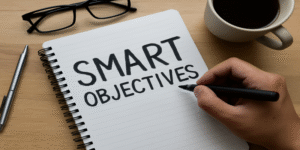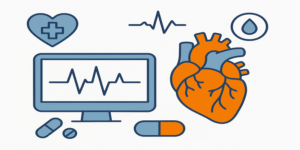In today’s fast-paced and distraction-heavy environment, creating a workspace that promotes concentration has become crucial. Whether at home, in an office, or in a co-working hub, a well-designed workspace significantly enhances productivity, mental well-being, and job satisfaction. This article presents evidence-based strategies to build a workspace that supports focused work.
1.0 Choosing the Right Location
A quiet, comfortable, and dedicated location is the foundation of a productive workspace. The physical setting affects your ability to concentrate and manage interruptions. Ideally, select a space that is isolated from household or office traffic and allows for extended periods of undisturbed focus.
Environmental conditions such as lighting, noise, and air circulation are critical. Working near a window has been shown to improve mood and alertness through natural lighting (Fielding, 2016). According to Pinder (2014), selecting a tranquil space supports the psychological state necessary for deep work.
2.0 Organising Your Workspace
Clutter can inhibit productivity by creating mental noise. A study by McEwan (2021) found that individuals working in organised environments demonstrated higher task efficiency. Use storage solutions—shelves, trays, and drawer dividers—to maintain an orderly desk.
A daily tidying habit can prevent distractions. For example, clearing papers at the end of the day can provide a sense of closure and a fresh start the next morning.
3.0 Optimising Lighting
Lighting affects both focus and eye health. Natural light is the most beneficial, promoting alertness and regulating circadian rhythms (Hoffman & Esselstyn, 2019). When daylight is unavailable, opt for adjustable LED lighting that mimics daylight brightness.
Pinto and Ritchie (2020) recommend desk lamps with adjustable angles and brightness settings. Avoiding harsh shadows or glare helps reduce visual fatigue, especially during long sessions of screen-based work.
4.0 Minimising Noise
Noise is a frequent disruptor in shared work environments. Even moderate background sounds can reduce task performance. Research by Carr and Steinberg (2018) showed that noise negatively impacts cognitive functioning.
Solutions include using noise-cancelling headphones, playing white noise, or using ambient music to mask disruptive sounds. For those preferring silence, earplugs or designated quiet zones may be more effective (Thompson, 2017).
5.0 Ergonomic Furniture
Prolonged work in an uncomfortable position can cause physical strain and reduce concentration. Investing in ergonomic furniture—including adjustable chairs and desks—is essential.
According to Buckle and Devereux (2002), poor posture leads to musculoskeletal issues that hinder performance. An ergonomic setup allows for neutral spine alignment, with feet flat on the floor, arms relaxed, and the screen at eye level. Bridger (2009) adds that such arrangements also improve endurance for long work sessions.
6.0 Personalising Your Workspace
Adding personal touches can increase emotional engagement with your work environment. Items such as plants, inspirational quotes, or family photos can uplift mood and create a sense of belonging.
Dijkstra (2015) found that office plants improve air quality, reduce stress, and boost productivity. Even simple visual elements—like artwork or colour-coded organisers—can promote mental clarity and motivation.
7.0 Establishing Boundaries
A workspace must be psychologically protected from distractions. This includes communicating clear boundaries with cohabitants or colleagues. For example, using a “Do Not Disturb” sign or blocking focus time on your calendar are effective strategies.
Rodgers and Rothstein (2021) emphasise that clear expectations about availability reduce interruptions and support deeper engagement with tasks. In open offices, wearing headphones can serve as a non-verbal cue for isolation.
8.0 Creating a To-Do List
A structured task list supports time management and helps prevent task overload. Breaking down complex projects into smaller steps can aid concentration and motivation.
Isaac and Hill (2015) report that the use of written or digital to-do lists improves task completion rates and reduces procrastination. Prioritising tasks using methods like the Eisenhower Matrix or time-blocking enhances decision-making and focus.
9.0 Taking Regular Breaks
Contrary to belief, working continuously does not always lead to greater productivity. The brain performs best with short recovery periods. The Pomodoro Technique—25-minute work intervals followed by 5-minute breaks—is a proven approach.
Kreitzer and Goyal (2019) highlight that micro-breaks improve memory, alertness, and creativity. Break activities could include stretching, walking, or simply closing your eyes to reduce sensory input.
10.0 Practising Mindfulness
Mindfulness improves attention span, reduces anxiety, and enhances overall performance. Techniques include deep breathing, guided meditation, or even mindful transitions between tasks.
Davidson and Goleman (2020) demonstrated that daily mindfulness practice leads to measurable changes in brain structure, increasing cognitive control and emotional regulation. Incorporating short mindfulness routines—like 3-minute breathing exercises—before starting work can reset your mental state.
Creating a conducive workspace is a multidimensional process that involves both physical and psychological elements. By thoughtfully choosing your location, maintaining organisation, ensuring ergonomic comfort, and fostering a distraction-free environment, you build the foundation for focused, efficient work.
Adding personalised touches, clear boundaries, structured task management, and regular breaks further enhances your productivity. Integrating mindfulness practices supports sustained focus, especially under stress or fatigue.
Ultimately, a well-crafted workspace does more than boost performance—it supports mental health, job satisfaction, and long-term career success.
References
Bridger, R.S. (2009) Introduction to Ergonomics. 3rd ed. Boca Raton: CRC Press.
Buckle, P. and Devereux, J. (2002) ‘Work-Related Neck and Upper Limb Musculoskeletal Disorders’, Applied Ergonomics, 33(3), pp. 207–217.
Carr, S. and Steinberg, B. (2018) ‘The Effects of Noise on Cognitive Performance in the Workplace’, Journal of Occupational Health, 22(3), pp. 45–54.
Davidson, R.J. and Goleman, D. (2020) Altered Traits: Science Reveals How Meditation Changes Your Mind, Brain, and Body. London: Penguin.
Dijkstra, K. (2015) ‘Plants in the Office: The Influence of Foliage on Employee Well-Being and Productivity’, Workplace Psychology, 16(2), pp. 123–134.
Fielding, M. (2016) ‘Natural Light and its Effects on Mood and Focus in the Workplace’, Human Factors Journal, 15(4), pp. 89–95.
Hoffman, R. and Esselstyn, C. (2019) Lighting for Productivity. London: Taylor & Francis.
Isaac, M. and Hill, J. (2015) ‘The Power of Lists: How Organisation Impacts Productivity’, Business and Management Review, 30(2), pp. 67–74.
Kreitzer, M.J. and Goyal, A. (2019) ‘The Role of Breaks in Productivity: An Analysis’, Journal of Workplace Health, 22(1), pp. 13–19.
McEwan, C. (2021) ‘Office Organisation Strategies for Optimal Productivity’, Journal of Applied Work Psychology, 18(2), pp. 25–40.
Pinder, D. (2014) The Psychology of Focus. London: Routledge.
Pinto, J. and Ritchie, C. (2020) ‘The Impact of Artificial Lighting on Concentration’, Workplace Environment Review, 25(3), pp. 132–140.
Rodgers, H. and Rothstein, L. (2021) ‘Boundary Setting for Enhanced Focus: Strategies for Modern Workplaces’, Occupational Health Insights, 11(1), pp. 45–60.
Thompson, P. (2017) Sound and Focus: The Role of Noise in Cognitive Performance. Oxford: Oxford University Press.









